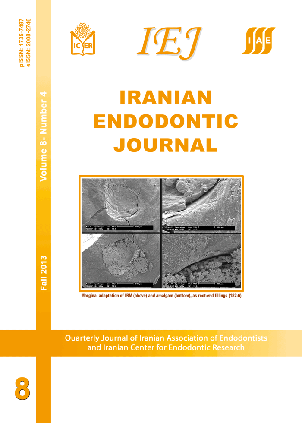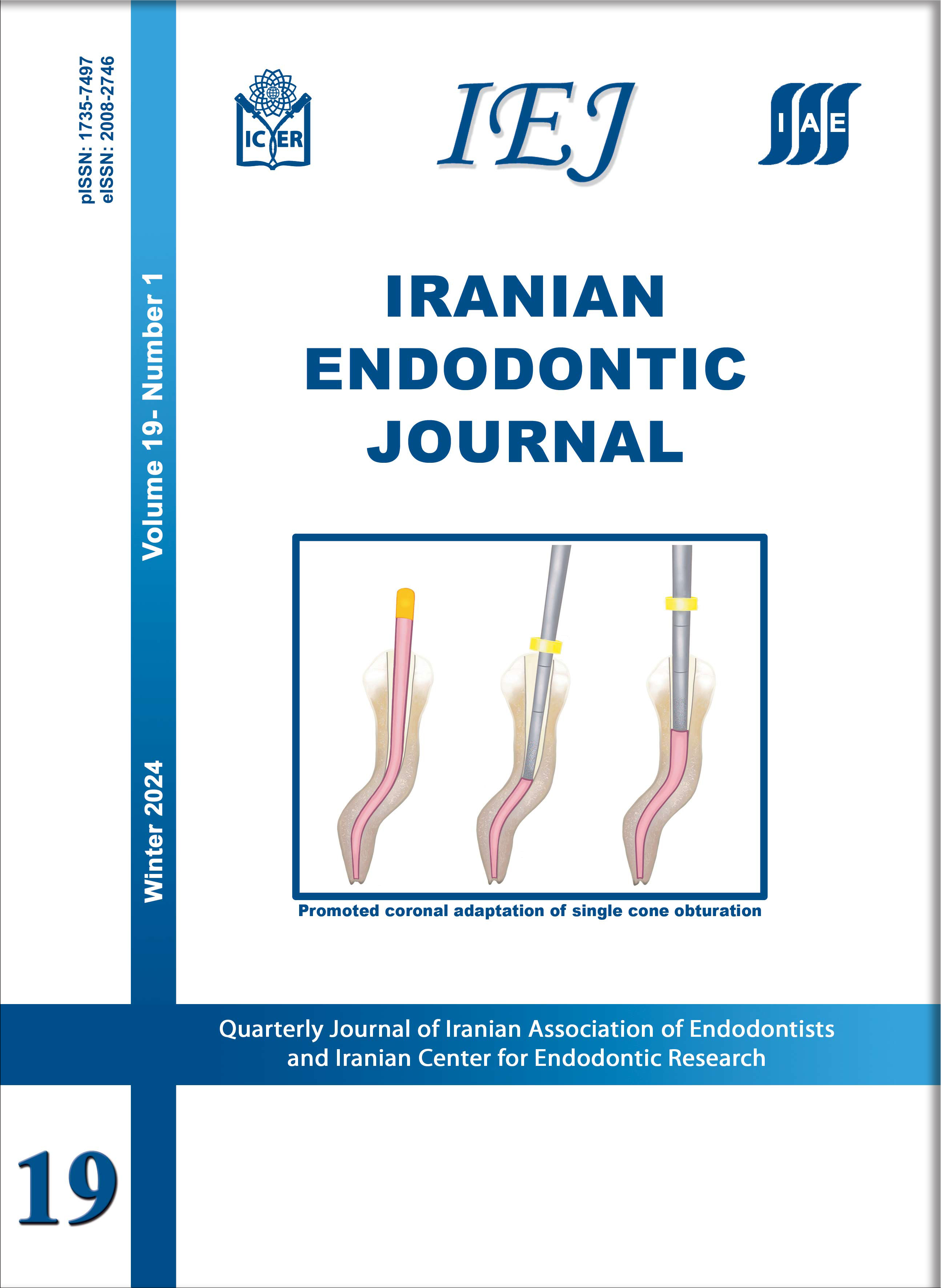Treatment Outcomes of Primary Molars Direct Pulp Capping after 20 Months: A Randomized Controlled Trial
Iranian Endodontic Journal,
Vol. 8 No. 4 (2013),
7 October 2013,
Page 149-152
https://doi.org/10.22037/iej.v8i4.4464
Introduction: The aim of this randomized controlled trial was to compare the radiographic and clinical success rates of direct pulp capping (DPC) using ProRoot mineral trioxide aggregate (MTA) or calcium enriched mixture (CEM). Methods and Materials: A total of 42 symptom-free carious vital primary molars (21 pairs) were selected in this split mouth trial and randomly pulpotomized in two experimental groups. Pinpoint pulp exposures were covered by the same blinded operator with MTA or CEM, and then restored by amalgam. Radiographic and clinical successes were evaluated at 20 month follow-up. Data were statistically analyzed using McNemar test. Results: Nineteen patients were available for 20-month follow-up; only one failed tooth was extracted in the CEM group. All available teeth were symptom-free, however, the final evaluated success rate was 89% in CEM (CI 95%: 0.82-0.96) and 95% in MTA (CI 95%: 0.85-1) groups without statistical difference (P=0.360). Worst case scenario was applied for missing value analysis; assuming that the 2 lost cases in CEM group had failed and the only lost case in MTA group was due to treatment success, as a result the success of CEM and MTA were 81% (CI 95%: 0.72-0.90) and 95% (CI 95%:0.85-1), respectively, with no statistical difference (P=0.078). In the reverse scenario, the success of MTA and CEM were 86% (CI 95%: 0.78-0.94) and 90% (CI 95%: 0.82-0.98), respectively; again with no statistical difference (P=0.479). Conclusion: Effectiveness of MTA and CEM biomaterials for primary molars’ DPC was similar; CEM can be a suitable alternative for MTA.




